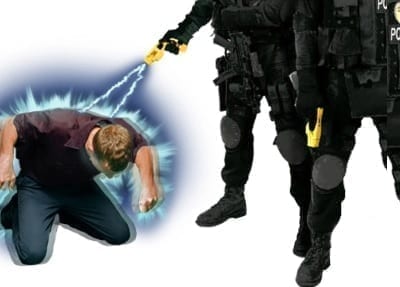Officers May be Misusing Tasers in Jails, According to Investigation
Tasers currently are not used in federal prisons, but officers carry them in 27 state-operated facilities. These Tasers are meant only for law enforcement who have high-risk roles. Tasers are most common in local and county jail systems. An investigation that took a look at the number of deaths in U.S. jails caused by Taser use found this ‘weapon’ was the cause of more than a quarter of 84 inmate deaths.
The deaths of 104 inmates who died as a result of being stunned were evaluated in total and an autopsy report was requested for 84. From this number, only two inmates were considered armed and dangerous when the stun gun was used, while 18 were assaulting guards or fellow inmates.
In 34 of these cases, the inmates were restrained by the use of handcuffs or other means when the Tasers were deployed, suggesting they could not possibly have been considered dangerous and weren’t able to even defend themselves. In 49 of 70 cases, the inmate was pinned to the ground or otherwise held.

There have been wrongful death lawsuits filed in 68 percent of the 104 deaths. 93 percent of these resulted in settlements payouts. Video footage was obtained over the course of the investigation pertaining to jails in Ohio, Tennessee, Arkansas, and Oklahoma. These videos allegedly showed disturbing footage for which authorities have been urged to investigate and prosecute jail officials.
“In my view, all of the incidents shown in this video require independent investigation and most of them are likely to merit prosecution,” special rapporteur Nils Melzer said. “Clearly gratuitous infliction of severe pain and suffering…constitutes a grave violation of human dignity and of the universal code of conduct for law enforcement officials.”
Not everyone whose case was considered in the investigation met their demise in the prison system. Martini Smith of Ohio was zapped with a Taser while incarcerated and lived to tell about it. Her unborn child didn’t. She had been detained after being accused of stabbing her boyfriend who she claimed was physically abusive. Officers ordered her to disrobe and remove all jewelry. She tried to comply, but couldn’t get her tongue ring out.
After struggling with it for a few minutes, one of the officers pointed a Taser at Smith’s bare chest and issued a warning. It didn’t matter. The ring wasn’t budging. She was Tased and suffered a miscarriage five days later. The charges against her were ultimately dismissed.
“I am not a huge fan of putting Tasers and batons on our employees, given the risks that are created,” Harley Lappin, then the chief of the Bureau of Prisons, told Congress in July 2009, the same year of the incident
Tasers have “high potential for abuse” behind bars, agreed U.S. Justice Department consultant Steve Martin, a former general counsel for the Texas Department of Corrections. “When you inflict pain, serious pain, for the singular purpose of inflicting pain, not to accomplish a tactical objective, what is that? It meets the definition of the legal standard of excessive force, but it’s also torturous.”
Sources:
Inmate deaths reveal “torturous” use of Tasers
Taser use contributed to more than 20 inmate fatalities in US jails; UN official calls for probe


Join the conversation!